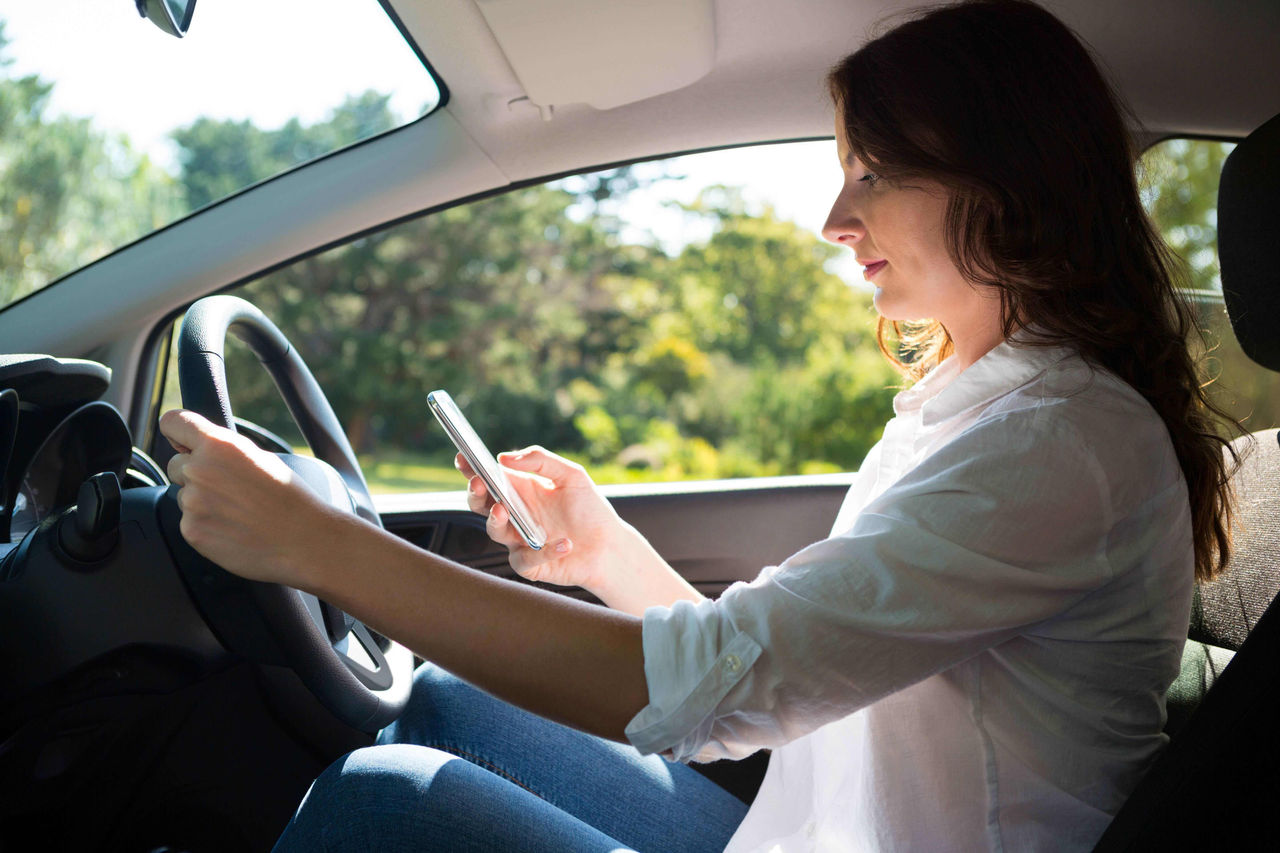Dangers of distracted driving
20 February 2023
Driving needs your full attention. As we head out of the busy Easter season the dangers of distraction on the road will increase. These distractions can be both visual (you’re looking at it), and cognitive (you’re thinking about it).
Essentially, anything that diverts a driver's attention for more than two seconds can significantly increase the likelihood of a crash or near-crash. In 2022, there were a total of 378 deaths on the New Zealand roads during the year.
As we plan for the Easter road trips, there is bound to be a lot more going on in your head and on the roads. Don’t let your eyes and mind drift, be vigilant and maintain your attention as your life may depend on it.

Here are six common distractions:
1. Mobile phones
We’ve all seen it and know what’s going on – some signs that someone is using their phone while driving are the sneaky lap-glance, that one driver who is slow to move in the queue, and sloppy lane-keeping. To avoid causing any crashes connect hands-free to the vehicle and store the phone out of reach or remove the temptation altogether by switching the phone off.
Another precautionary step you might want to take is when your mobile connects to your car via Bluetooth, many smart phones now allow you to either manually or better yet automatically activate ‘do not disturb mode’ when you are driving.
It is illegal to send and receive text messages, emails, or take calls on hand-held mobile devices while driving in New Zealand. It increases your crash risk, and the penalty is a $150 fine and 20 demerit points on your licence.
2. Navigation
There are many types of satellite navigation devices available to drivers. Modern vehicles now include it as factory, whereas others buy an external device or use Maps on their mobile phones. A Sat Nav can distract the driver and increase the chances of an accident.
As a driver, it is important to know how to best use your Sat Nav. Set a destination before you depart or pull over where safe to enter a destination. This unnecessary distraction is why many manufacturers inhibit you from even attempting to add an address into the navigation whilst the vehicle is in motion. You may have experienced this if you have been behind the wheel of a modern Mazda.
3. Food
Plan to grab a delicious pie while on that road trip. Don’t be tempted to eat that gravy filled delight whilst driving. While it’s not illegal to eat behind the wheel, it is considered a distraction. According to a study conducted by the University of Leeds, snacking drivers had up to 44% slower reaction times than normal. And drivers with a drink in their hand took 22% longer to react than those with both hands on the wheel. If you can’t resist temptation then adopt a no food in car policy, break up a road trip, and get out of the car and into the fresh air and perhaps indulge in that pie at a great picnic spot.
4. Music
While the main benefit of listening to music while driving is that it makes the journey a lot more fun, skipping a song, channel surfing on the radio, or setting up music players can be a distraction and cause the driver to take their eyes off the road.
It’s also important that you keep the volume of music at a reasonable volume, so you are able to hear how your vehicle is running and hear what’s happening on the road around you. With music on full volume, you are less likely to hear any problems.
This also goes for the wearing of headphones - the driver will be less likely to be aware of their surroundings, hear the sirens of emergency services, or another motorist’s horn sounded as a warning of potential danger.
A study by Nelson and Nilsson Comparing headphone and speaker effects on simulated driving, found that drivers listening to headphones took over 200ms longer to react to developing hazards.
Tip: Play your music at a reasonable volume and if you are streaming your music from your device if possible, have that ideal road trip playlist loaded and ready to roll so you don’t need to skip songs you don’t like. If you’re driving with others, get your passengers to control the music.
5. Pets
Pets can be a big distraction – particularly if they’re unrestrained. You can never be sure how they’re going to react, especially if they are not familiar with a car journey. A spooked pet can be very unpredictable, and what better place to hide than down by the driver’s feet? It is important to correctly restrain your pets, not only as they could be a distraction, but for their safety.
6. Applying makeup
The application of makeup while looking into the rear-view mirror may cause an accident. Applying makeup while driving will slow your reaction time by double and cause you to be less aware of your surroundings.
Pay attention
Being distracted is risky, and you could face serious charges should that distraction lead to an injury or death if you crash. If your eyes are off the road, even at just 30kmh you have traveled 8m/second – so two seconds looking away = 16m (three + car lengths). At 100kmh it’s 28m/second.
Make sure that you stay safe and fully concentrate on the road.
Remember that it could only take a moment of distraction to cause a world of hurt.
Check out this informative video on common driver distractions, produced by SADD - the student-led charity with the collective goal of preventing loss on New Zealand roads.

